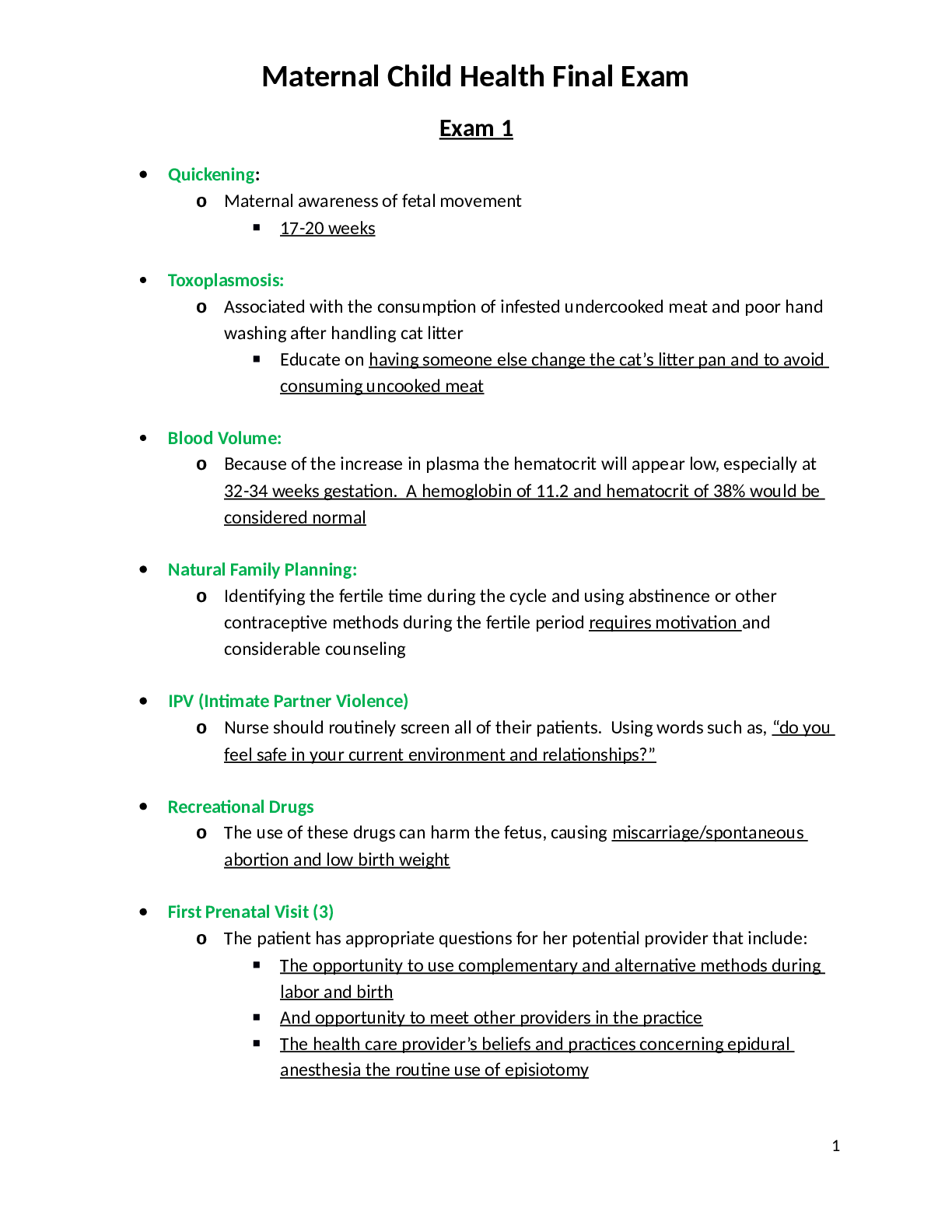Driving Course > QUESTIONS & ANSWERS > ASE A5 Brakes Final Exam Questions and Correct Answers (All)
ASE A5 Brakes Final Exam Questions and Correct Answers
Document Content and Description Below
ASE A5 Brakes Final Exam Questions and Correct Answers A vehicle is equipped with a vacuum brake booster. It doesn't have power assist until the engine runs for a minute, then it begins to work nor... mally. What is the most likely reason? A. Defective check valve B. Adjusted brake pedal push rod is too short C. Front brake disc is worn D. Engine requires a tune-up to produce a higher vacuum at idle speed ✔✔ Correct answer A-The defective check valve causes a loss in vacuum when the engine is off. That's why the power assist begins to function properly after the engine runs. The other three answers wouldn't cause the same issues. The brake pedal starts to feel spongy and low even though all the adjustments have been made according to the specifications. What could be the cause of the problem? A. Dented brake line B. Binding pedal linkage C. Weak hydraulic hose D. Plugged compensating port ✔✔ Correct answer C-The weak hydraulic brake hose causes a spongy pedal. The pressure can continue to build and the hose might expand, but not release the pressure to the brake units. Binding pedal linkage would lead to a hard pedal, which is also true for a dented brake line. The plugged compensator port leads to dragging brakes instead. The lack of brake pedal free play on a vehicle might cause: A. Spongy brake pedal B. Low brake pedal C. Pressure build-up and dragging brakes D. Fluid leaking beyond the primary piston cups ✔✔ Correct answer C-when there's no free play, the brakes can't disengage fully. This leads to the brakes dragging. The other situations wouldn't be caused by the lack of free play. When you remove the master cylinder, you must take all these steps EXCEPT: A. Disconnect the float level sensor B. Plug the ends of the brake lines to prevent fluid loss C. Vacuum boost pressure with power brakes D. Drain the master cylinder ✔✔ Correct answer D-Draining the master cylinder isn't required. If it needs to be done, the fluid can be removed after the lines are capped. Fluid will not run from the master cylinder while you remove it. Then, it's easier to empty once it's out. Brakes on an older vehicle with a quick take up valve in the master cylinder are being bled. Technician A believes that you must depress the quick take up valve. Technician B believes that the brakes can't be bled. Who is correct? A. Technician A B. Technician B C. Both technicians D. Neither technician ✔✔ Correct answer D-Both of these techs are wrong. The brakes on quick take up systems use the exact bleeding procedure as systems without the valve. You don't need to do anything different. A short power assist brake booster push rod will lead to which of these? A. Illuminated brake light B. Excessive brake pedal travel C. Inoperative brake system D. Excessive brake drag ✔✔ Correct answer B-The short push rod length has to travel farther to make contact. This leads to excessive pedal travel. The other complaints wouldn't occur as a result. Erratic brake pulling occurs on a vehicle when the brakes are applied. All of these could cause this problem EXCEPT: A. Double wall steel tubing B. Double wall copper tubing C. Flare nuts D. High-pressure rubber tubing ✔✔ Correct answer D-Excessive tire pressure isn't going to cause the erratic pulling. It will lead to increased tire wear. If the vehicle has low or uneven tire pressure, there might be a pull. You notice brake fluid in the engine. A possible cause of this leakage might be: A. Partially restricted air cleaner element B. Defective PCV valve with excessive restriction C. Defective one-way check valve in booster vacuum hose D. Defective vacuum hose to the brake booster ✔✔ Correct answer C-A defective hose would not allow the fluid to enter the engine. The PCV valve vents the crankcase of blow by gases and isn't part of the braking system. The air cleaner also can't cause a brake fluid leak. Brake systems contain all of these components EXCEPT: A. Double wall steel tubing B. Double wall copper tubing C. Flare nuts D. High-pressure rubber tubing ✔✔ Correct answer B-Copper tubing should never be used within the brake system. Copper corrodes easily which makes it a poor option. It also expands when subjected to high pressures. Which of these can lead to brake pedal fade? A. Brake drum machined beyond its limit B. Air in the hydraulic system C. Seized wheel cylinder piston D. Leakage beyond the master cylinder cups ✔✔ Correct answer A-the biggest downside of drum brakes is their susceptibility to fading. This loss of stopping power occurs when heat reduces the friction needed between the drum and shoe linings. Mechanical fading is when the drum gets too hot and expands away from the linings. If the drum is machined beyond its limit, the contact surface moves further from the shoes. When you make the final adjustments to the drum brakes: A. The star adjuster should be adjusted until there is a slight drag on the drum. Then, it needs to be backed off until the wheel begins to spin freely. B. The star adjuster should be adjusted one full turn to back the shoes away from the drum. C. The star adjuster should be adjusted until a slight drag on the wheel occurs. D. The star adjuster should be adjusted until the shoes hold the wheel in place firmly. Then, it should be backed off until there's a drag on the wheel. ✔✔ Correct answer A-You must adjust the star adjuster until there's a slight drag on the drum. Then you want to back it off until the wheel starts to spin freely. All the other answers are improper ways of adjusting drum brakes. All of these might lead to a low brake pedal, EXCEPT: A. Loose wheel bearing B. Seized caliper piston C. Brake adjustment D. Low brake fluid ✔✔ Correct answer B-Having a seized caliper piston leads to a high pedal. This also reduces braking power. The other three answers can lead to a low brake pedal. 4-wheel disc brakes on a vehicle are causing brake squeal. Technician A believes it's a defective proportioning valve issue. Technician B believes it's caused by movement of the brake pad while breaking. Who is correct? A. Technician A B. Technician B C. Both technicians D. Neither technician ✔✔ Correct answer B-Disc brake squeal is caused by the brake pad moving while braking. To reduce this, the mating surfaces need to be cleaned and lubricated. You also want to use OEM clips and anti-squeal shims. To further reduce the noise, do not machine the rotor more than needed. A restricted disc brake caliper hose might cause all of these EXCEPT: A. Poor stopping B. The vehicle pulls to the side under heavy braking C. Dragging brakes D. Brake pedal pulsation ✔✔ Correct answer D-A restricted disc brake caliper hose won't cause pedal pulsation. Pulsation results from something loose in the system or by an unparallel rotor. All the other answers could occur. Brake rotors need to be refinished under all of these conditions EXCEPT: A. Slight scoring or heat spots B. Failure of lateral runout or thickness variation checks C. Installation of a new brake rotor D. Noticeable brake pulsation ✔✔ Correct answer C-New brake rotors don't need to be refinished. Rotors should be refinished when there is scoring, heat spots, lateral runout, pedal pulsations or thickness variation. The wheel speed sensor is being diagnosed with an OEM diagnostic scan tool. Technician A says to verify the wheel speed sensor operation and compare all four wheel speed sensor outputs to the data list. Technician B says that the wheel's direction of rotation should be verified by looking at the direction on the scan tool data list. Who is correct? A. Technician A B. Technician B C. Both technicians D. Neither technician ✔✔ Correct answer C-Both techs are correct. You can verify the wheel speed sensor operation while comparing the four-wheel outputs to the data list. You can also verify it by looking at the direction on the scan tool data list. The ABS light doesn't go off after the engine starts. Technician A states that the parking brake is not fully released. Technician B states that the brakes can continue to operate like non-ABS brakes. Who is correct? A. Technician A B. Technician B C. Both technicians D. Neither technician ✔✔ Correct answer B-If the amber light is on, it indicates that there is an ABS fault. The system reverts to regular brake operation without ABS. Technician A is wrong because the parking brake would only affect the red brake light. [Show More]
Last updated: 1 year ago
Preview 1 out of 10 pages
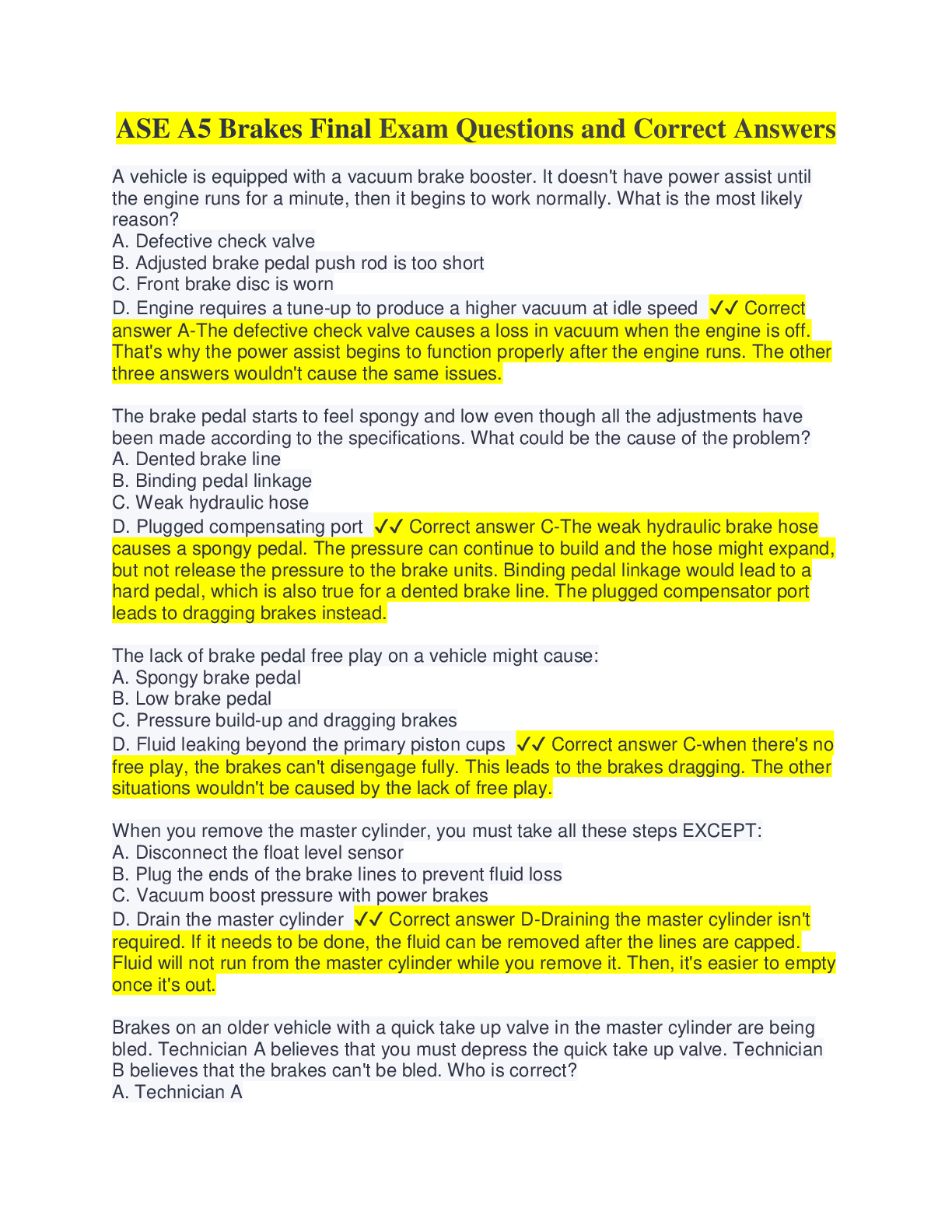
Reviews( 0 )
Document information
Connected school, study & course
About the document
Uploaded On
Jan 12, 2023
Number of pages
10
Written in
Additional information
This document has been written for:
Uploaded
Jan 12, 2023
Downloads
0
Views
93
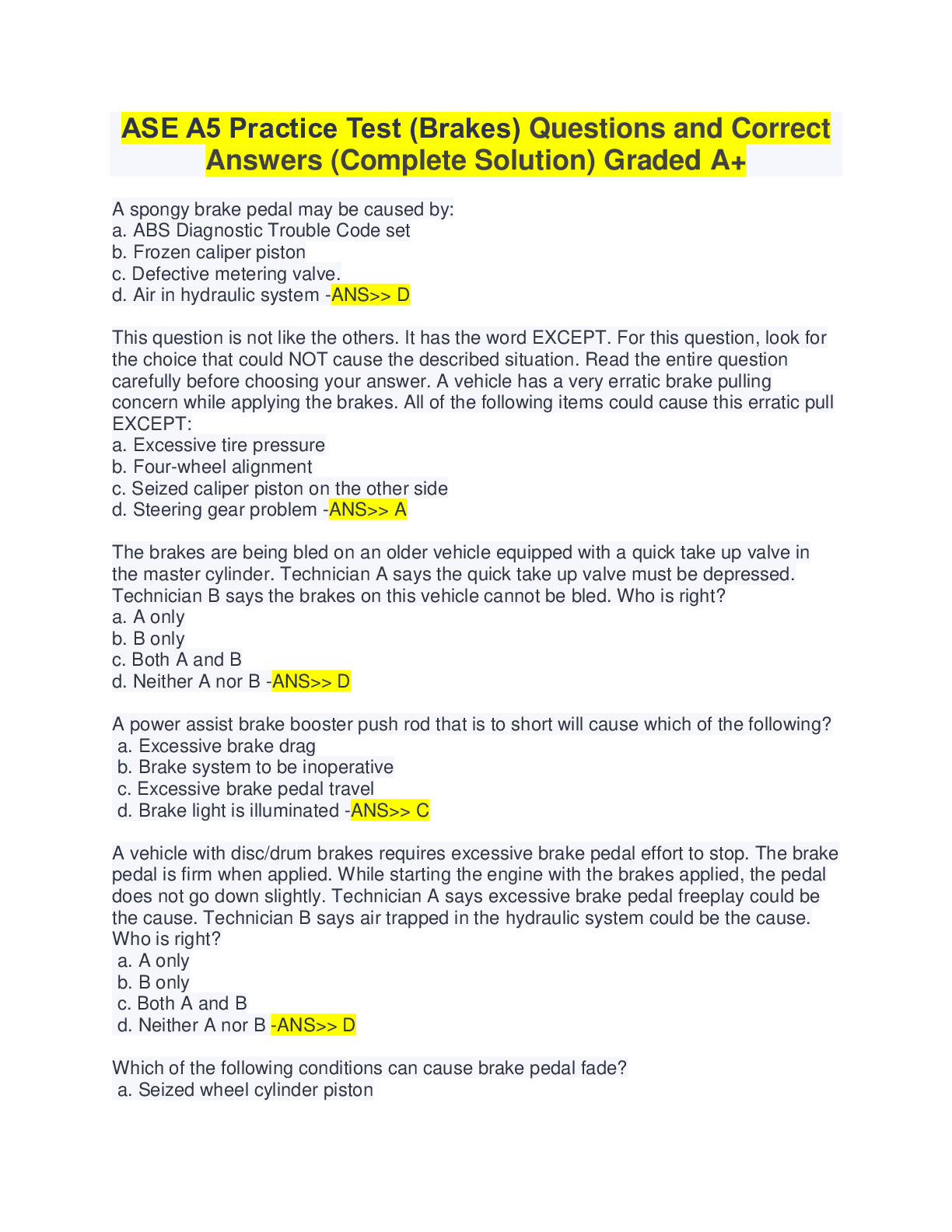

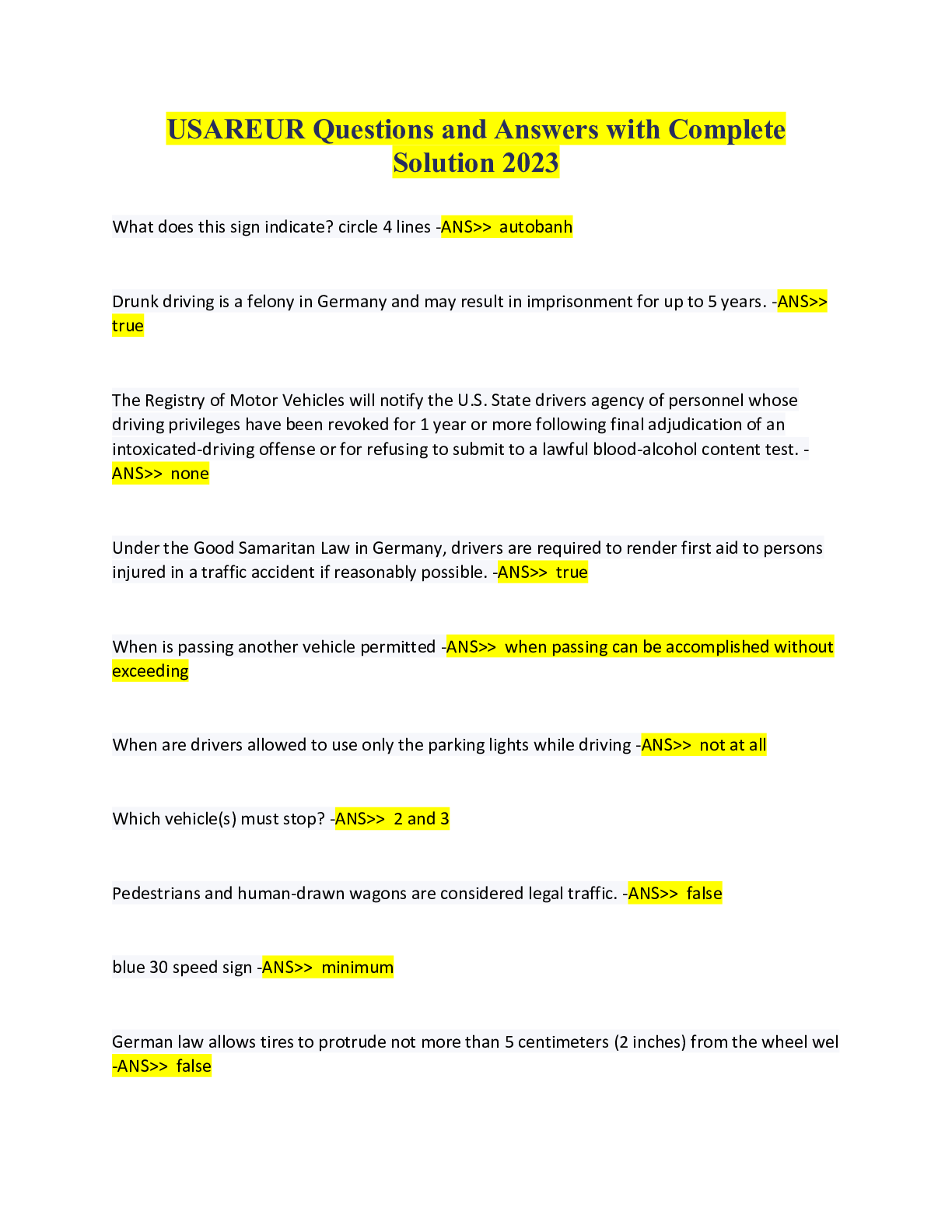

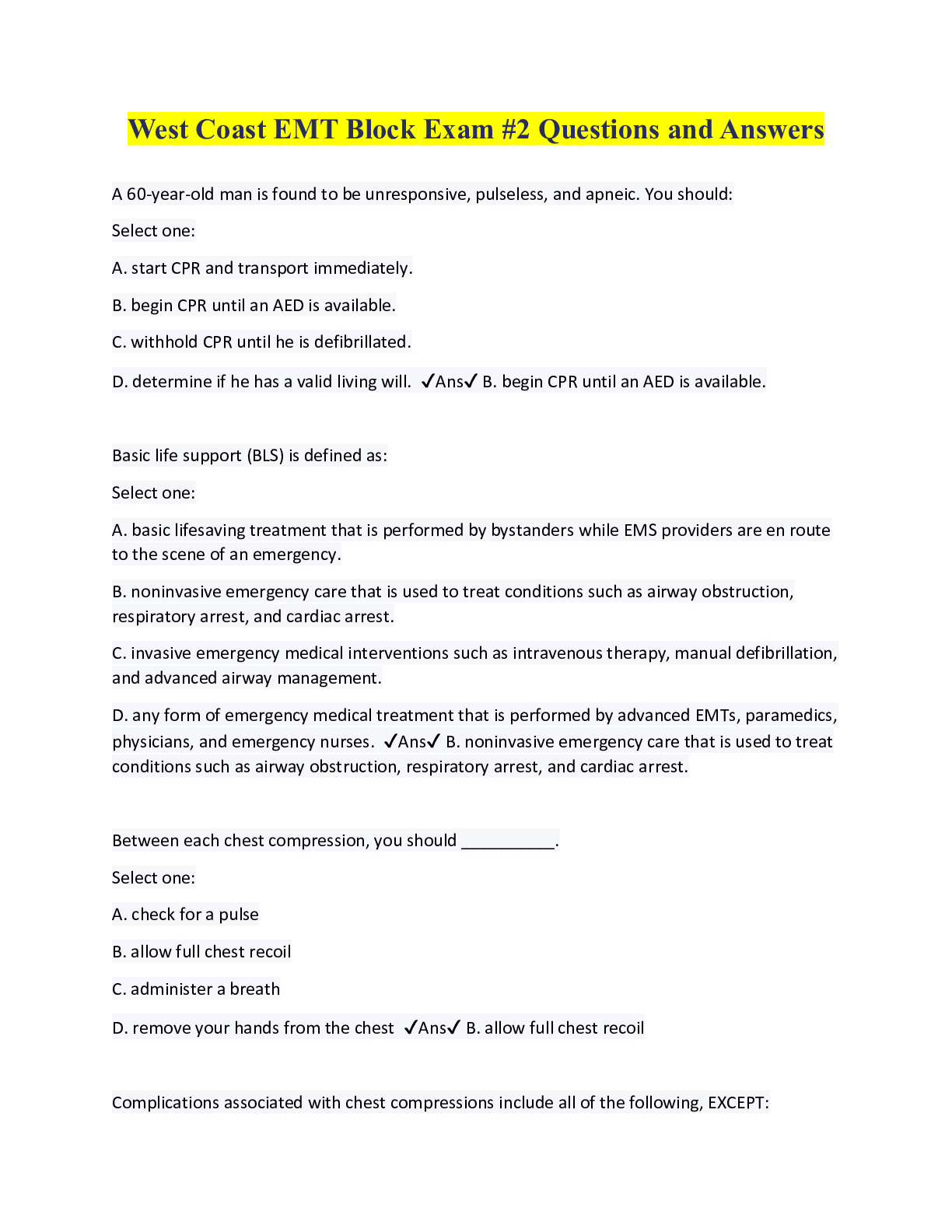
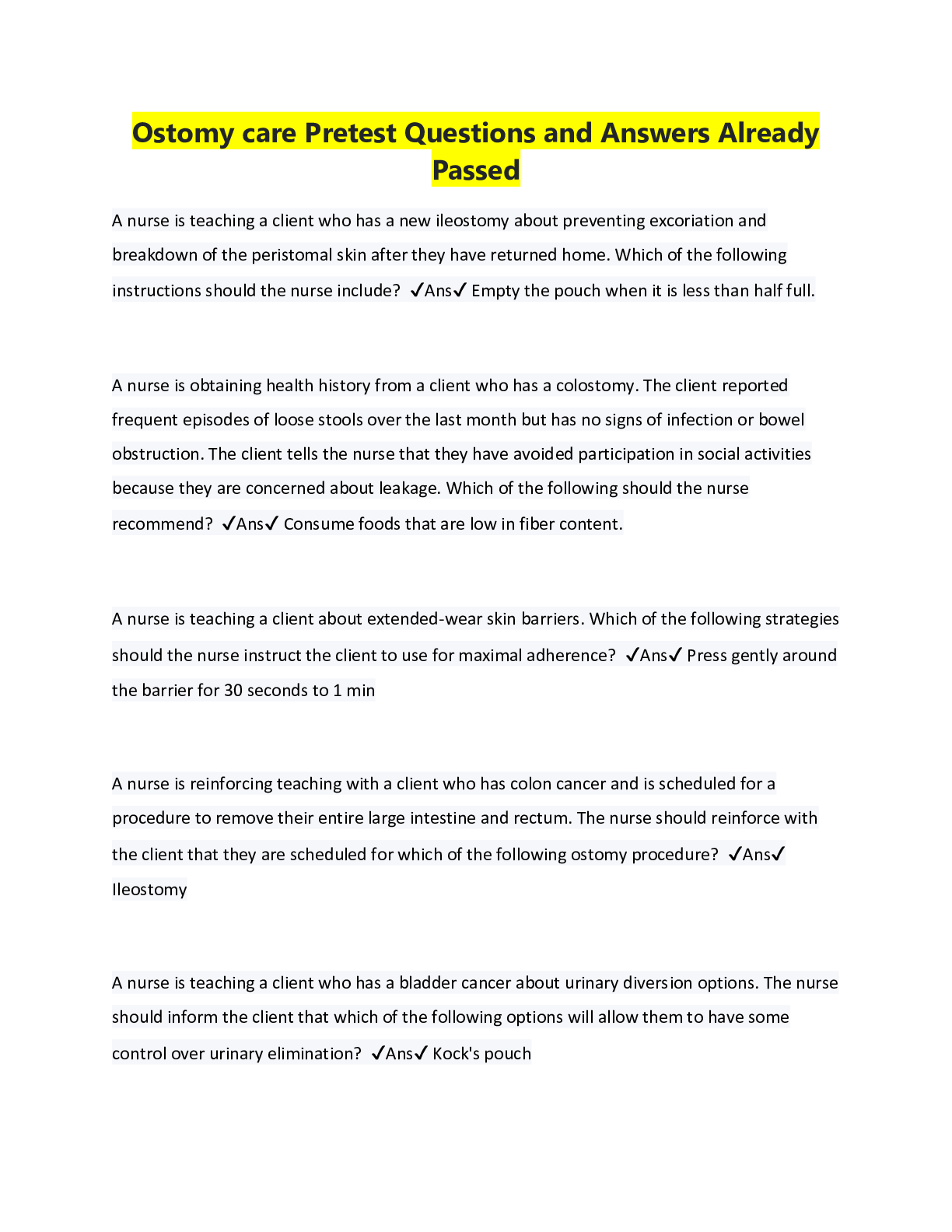
.png)
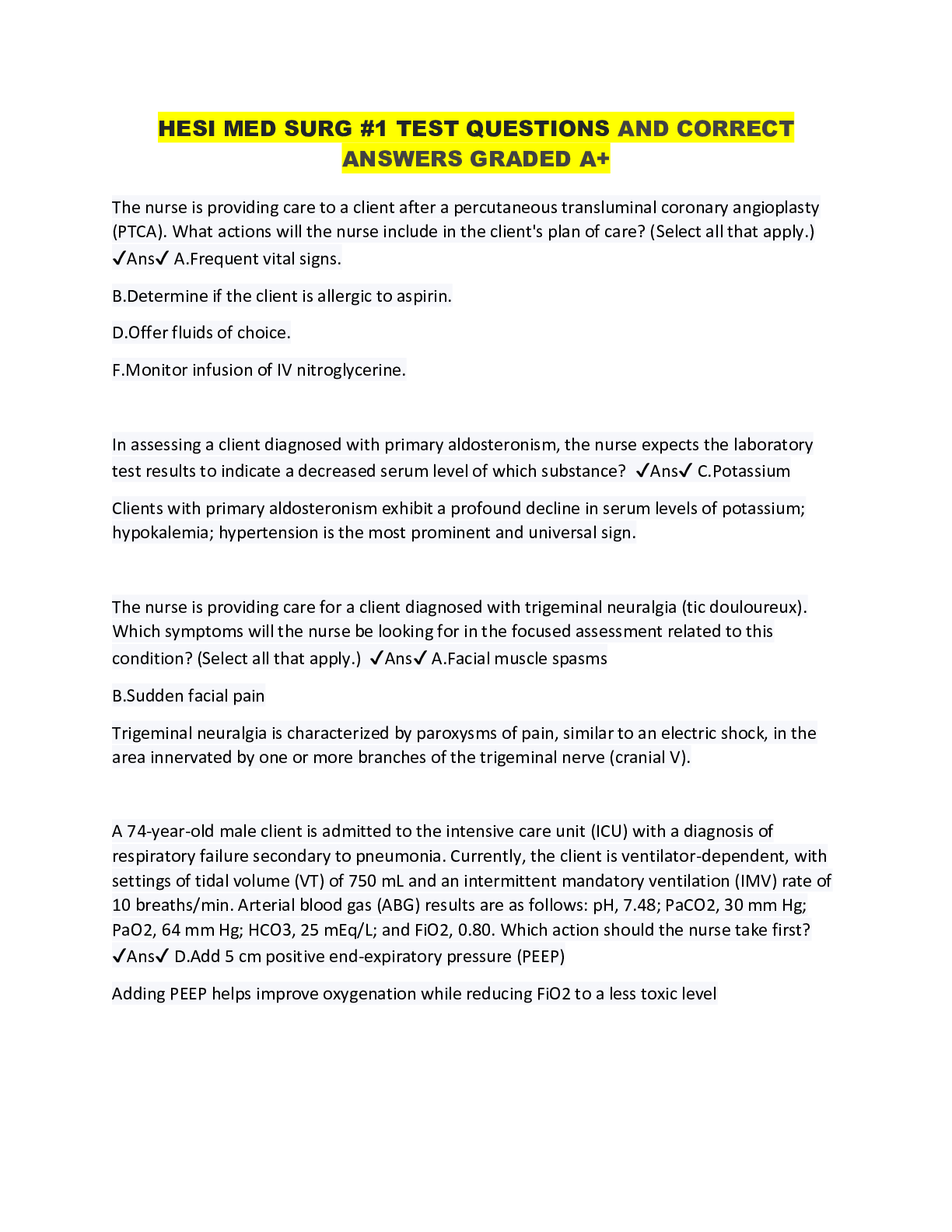


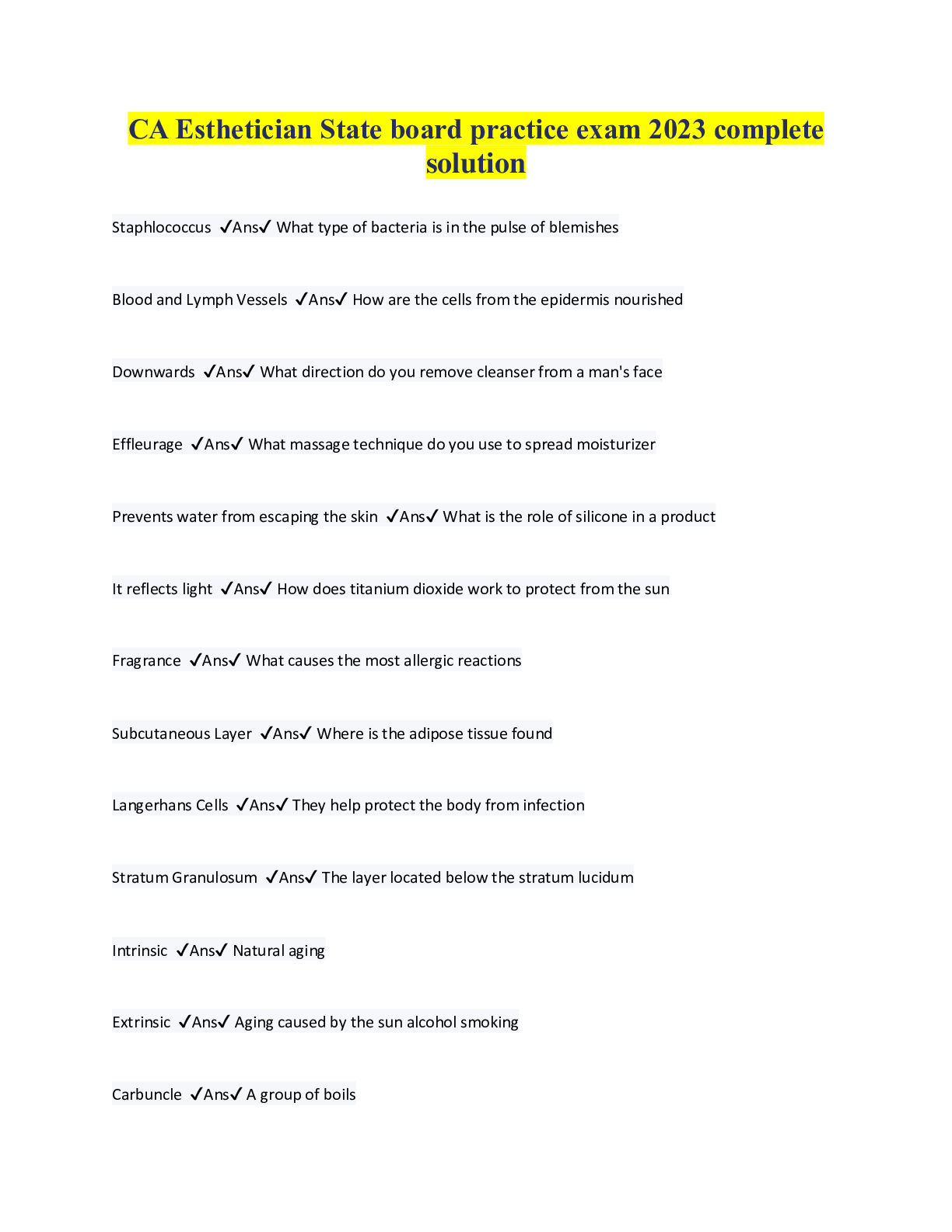
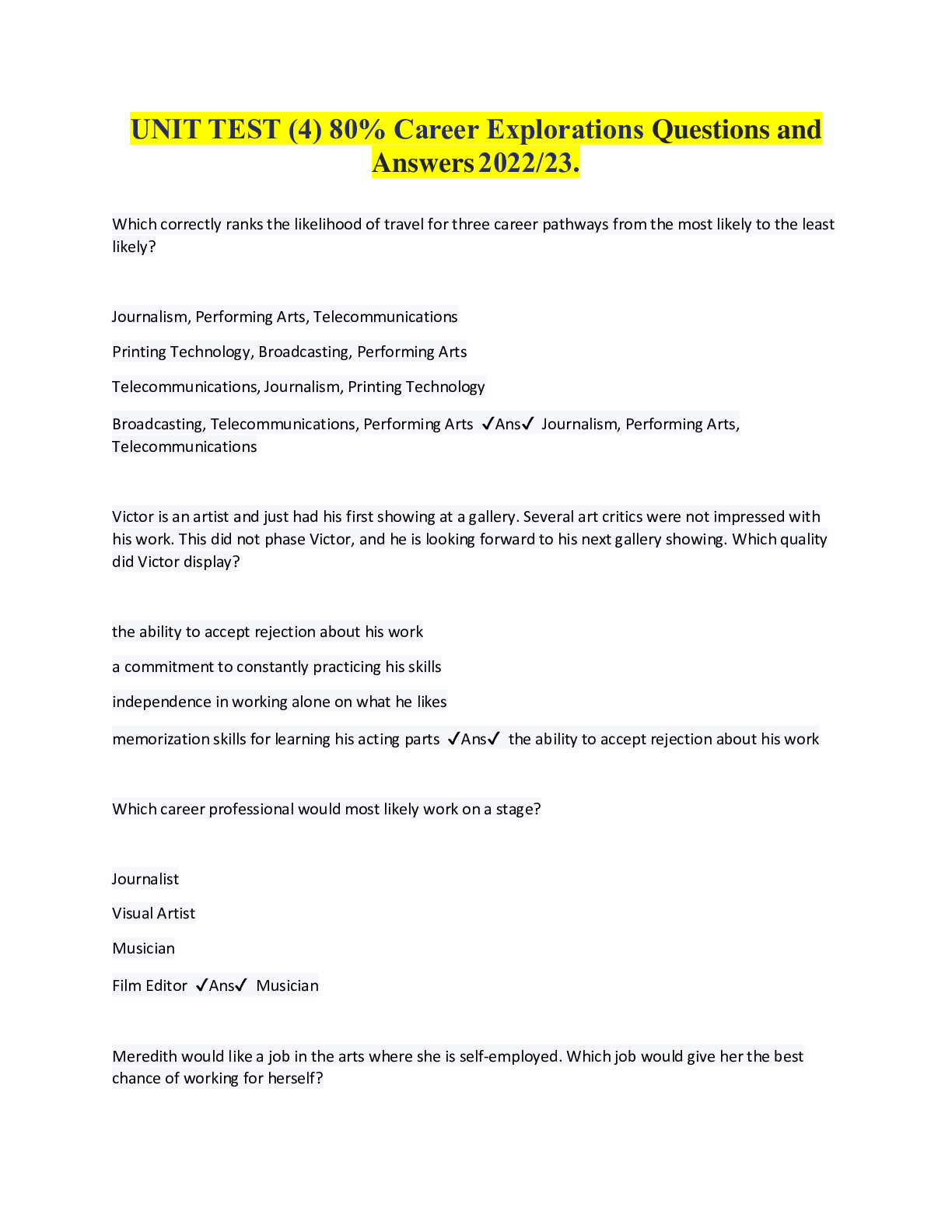
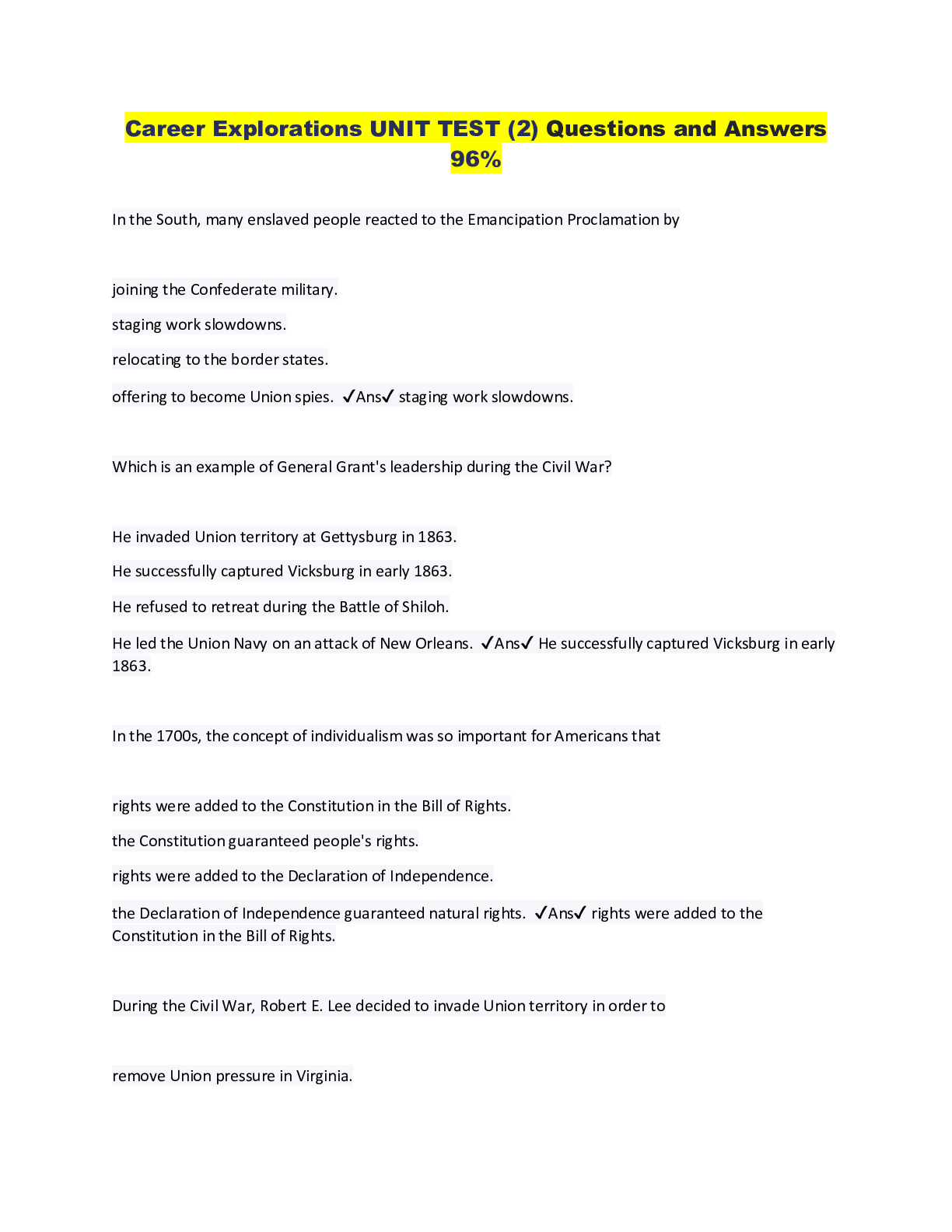
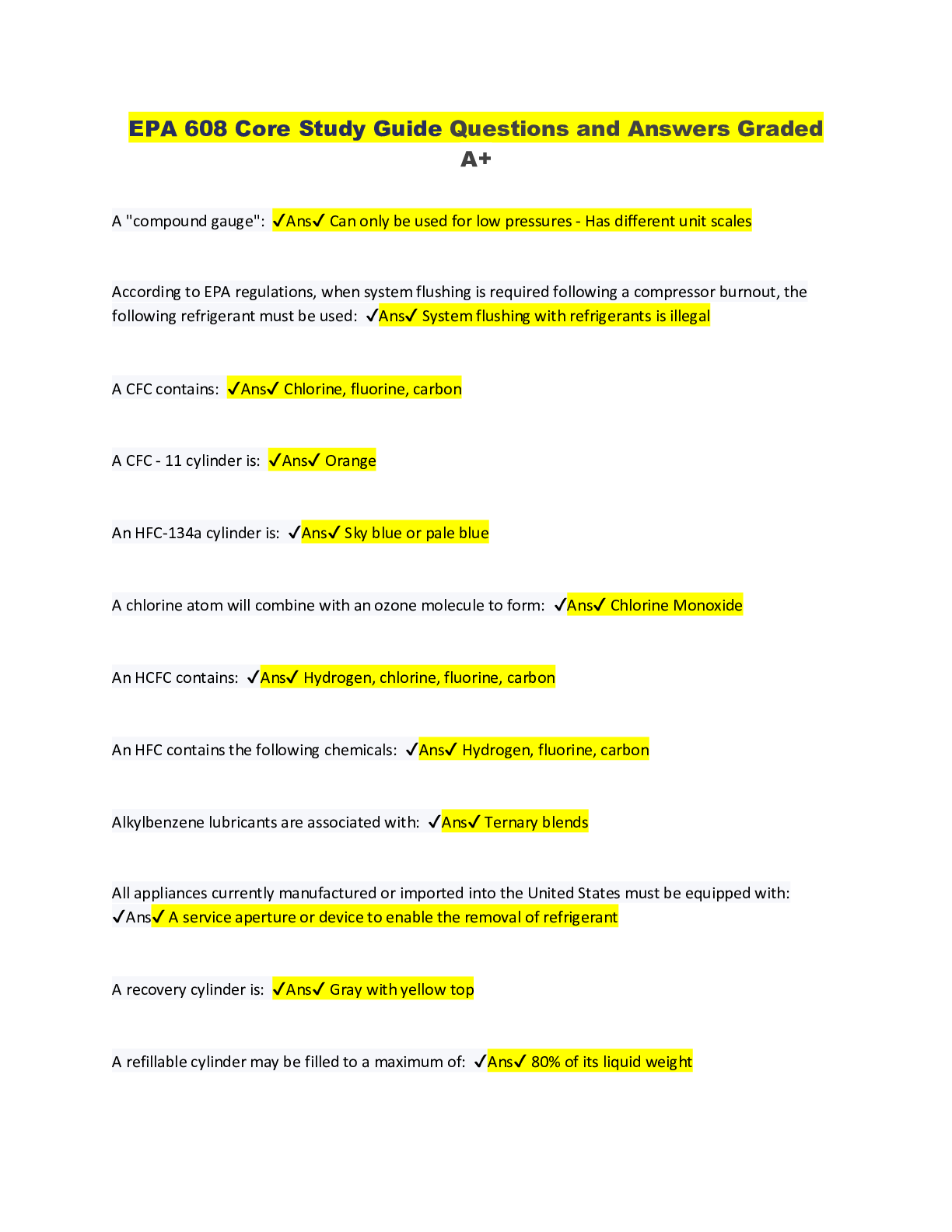

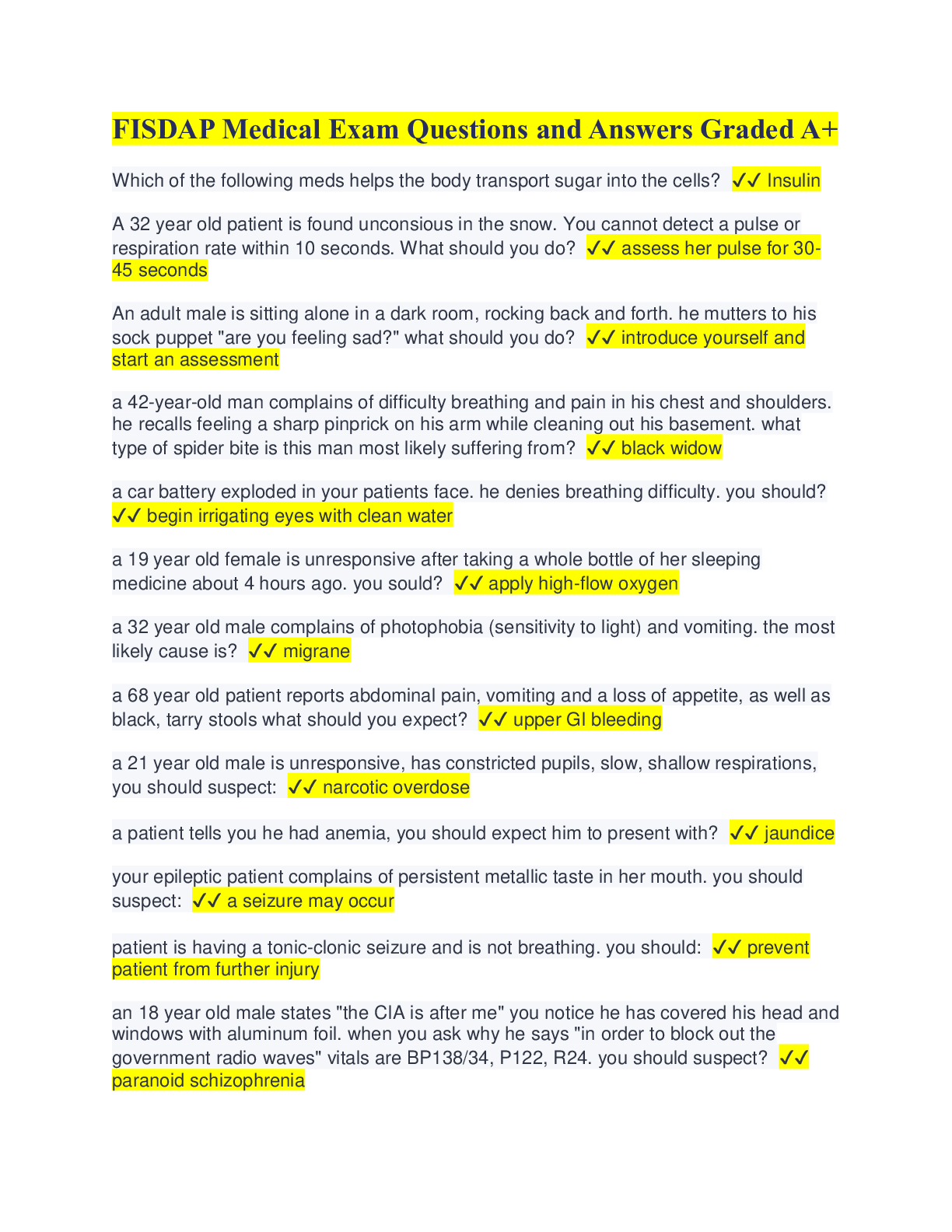

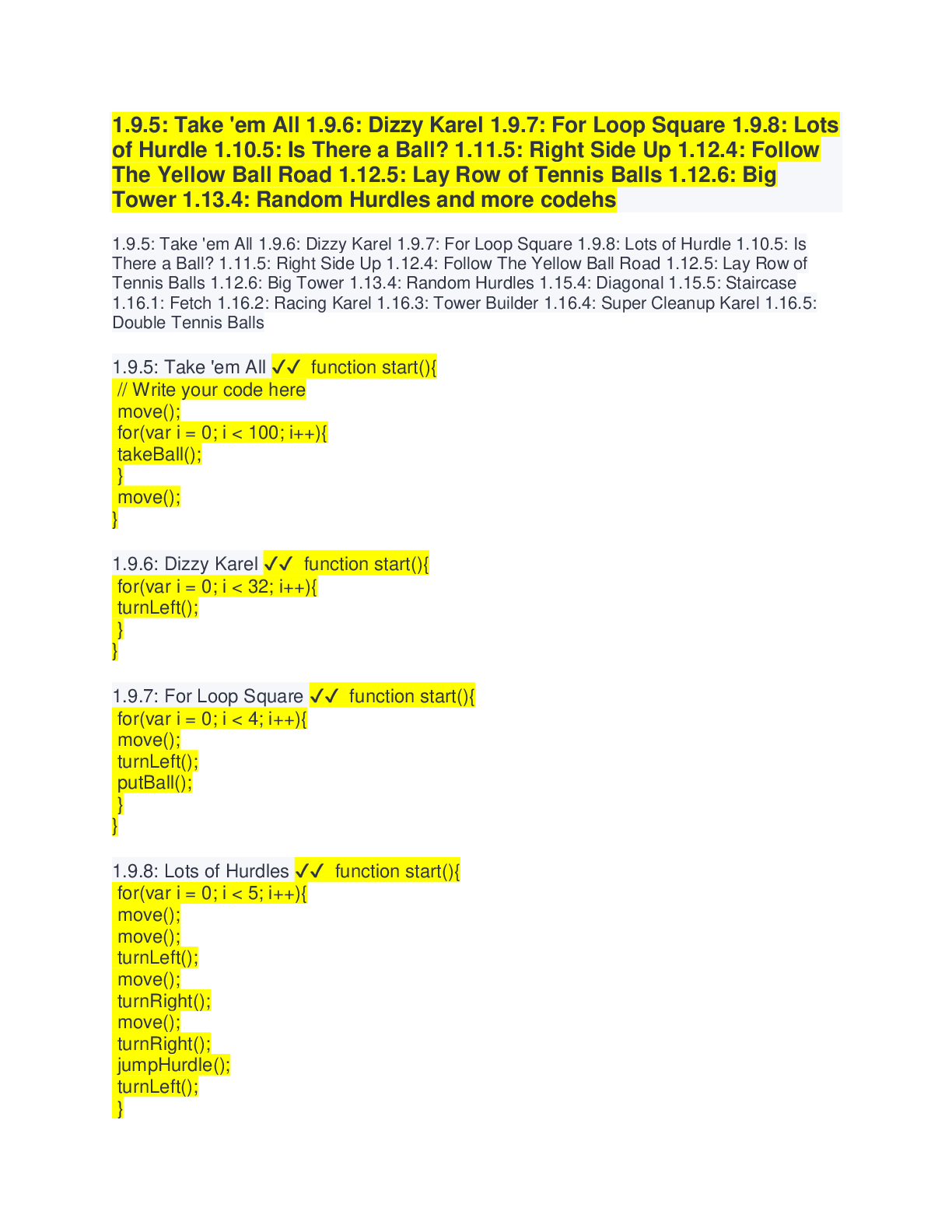

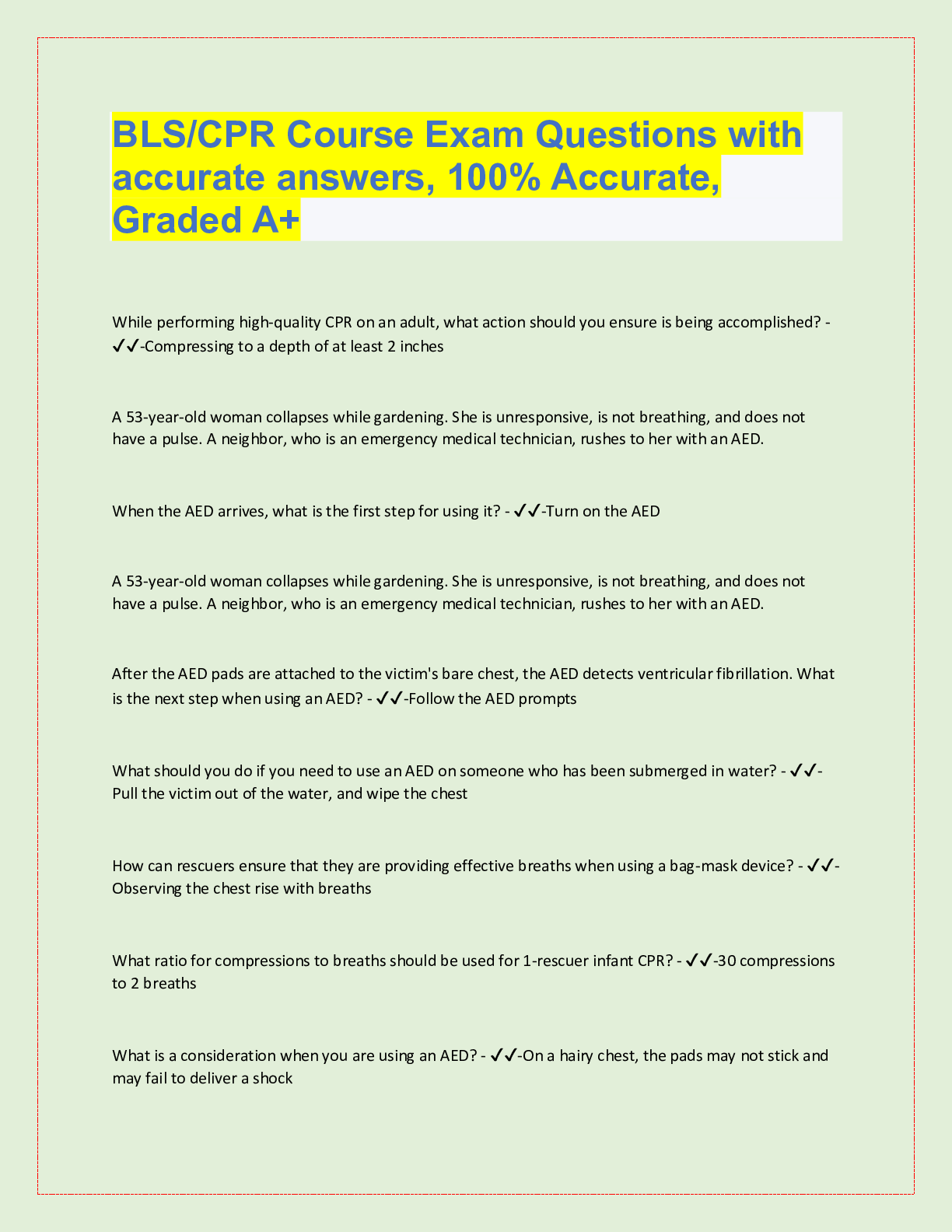

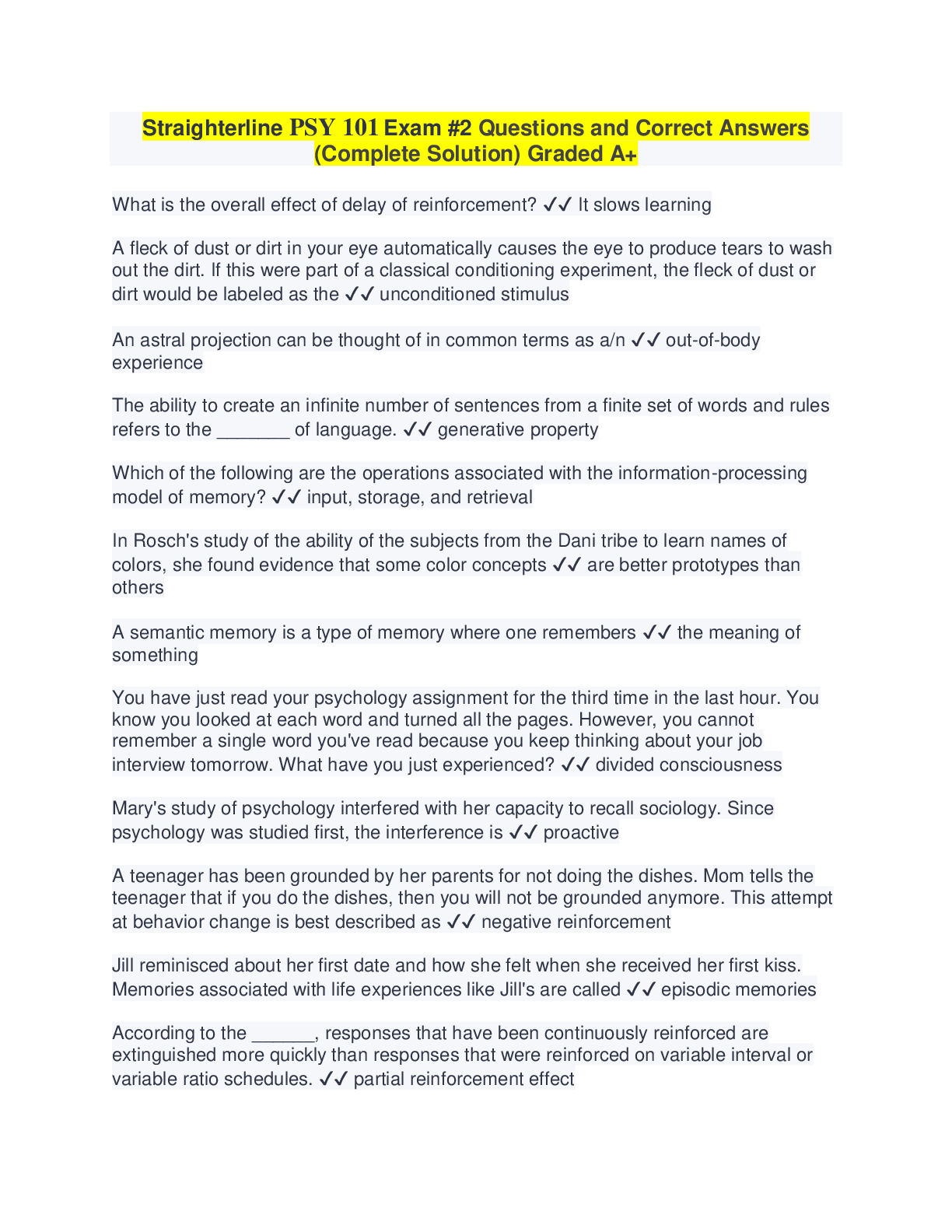


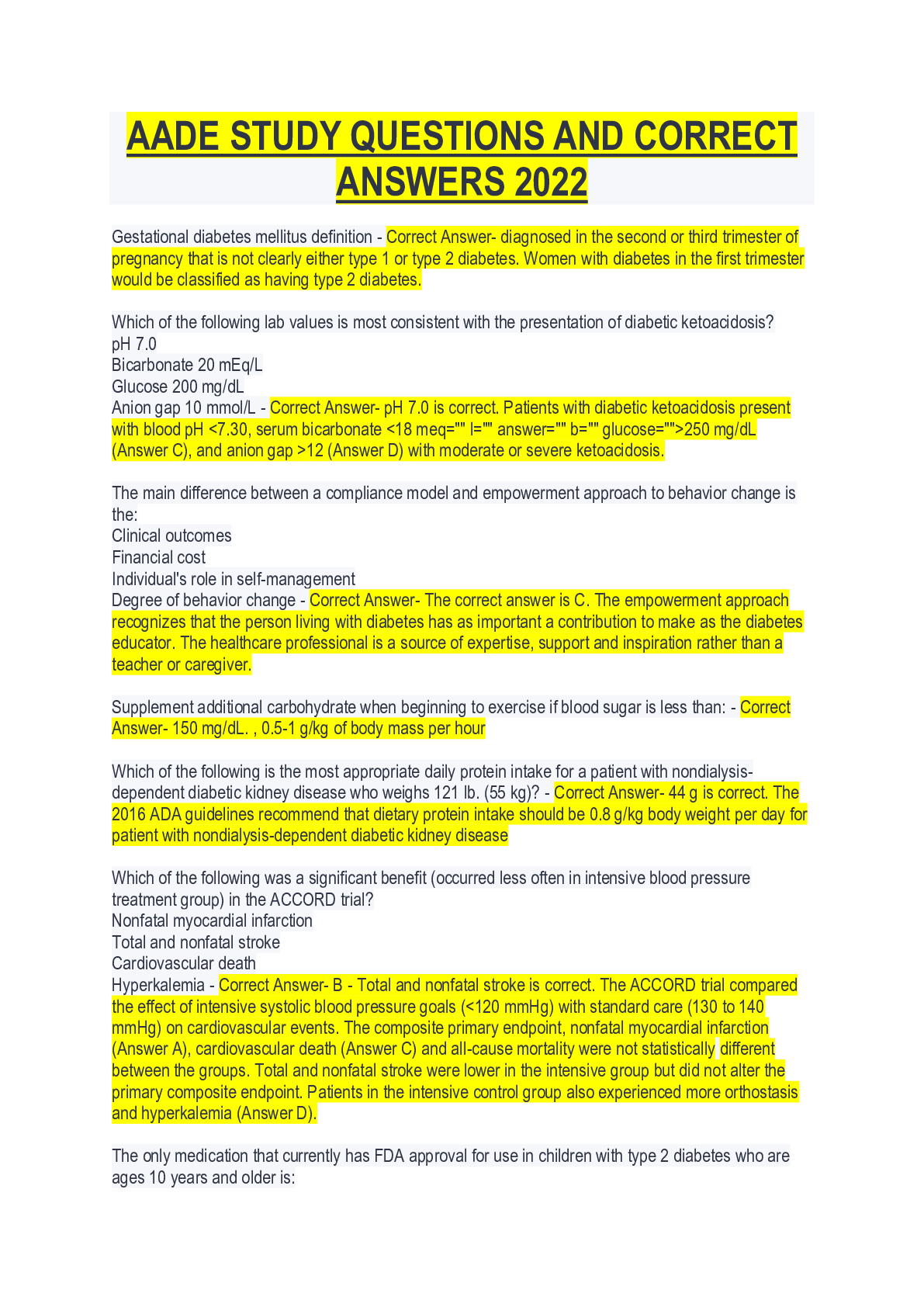
.png)

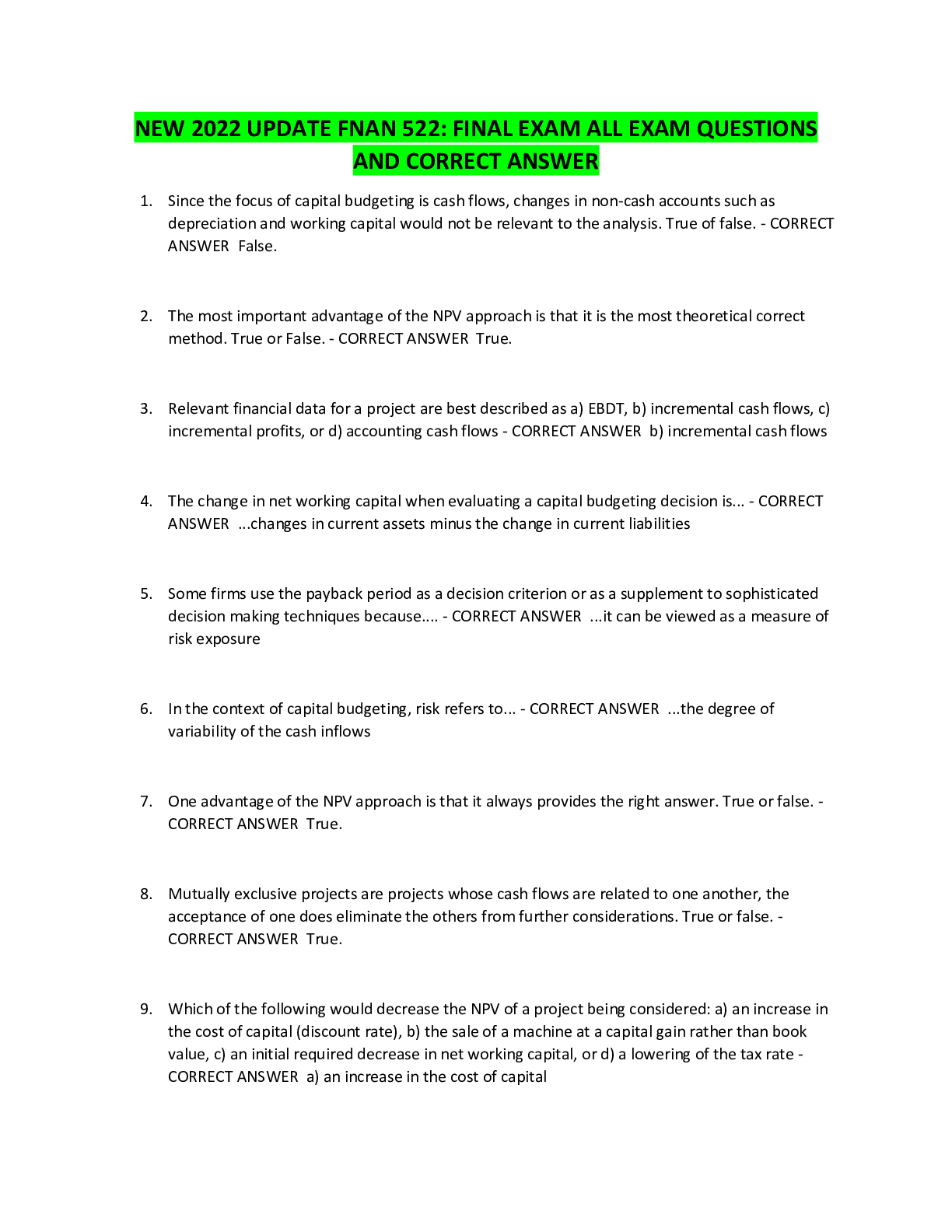

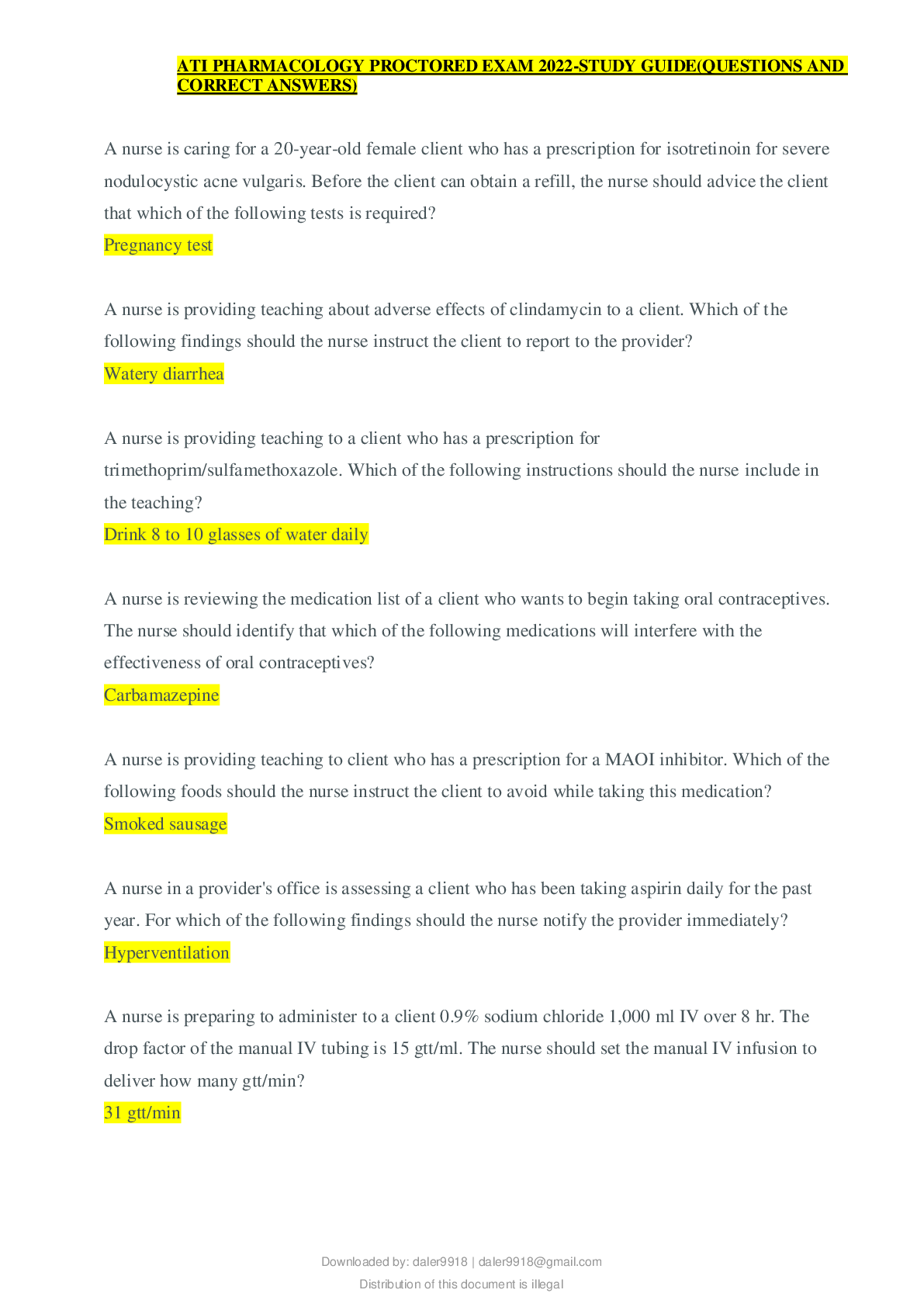
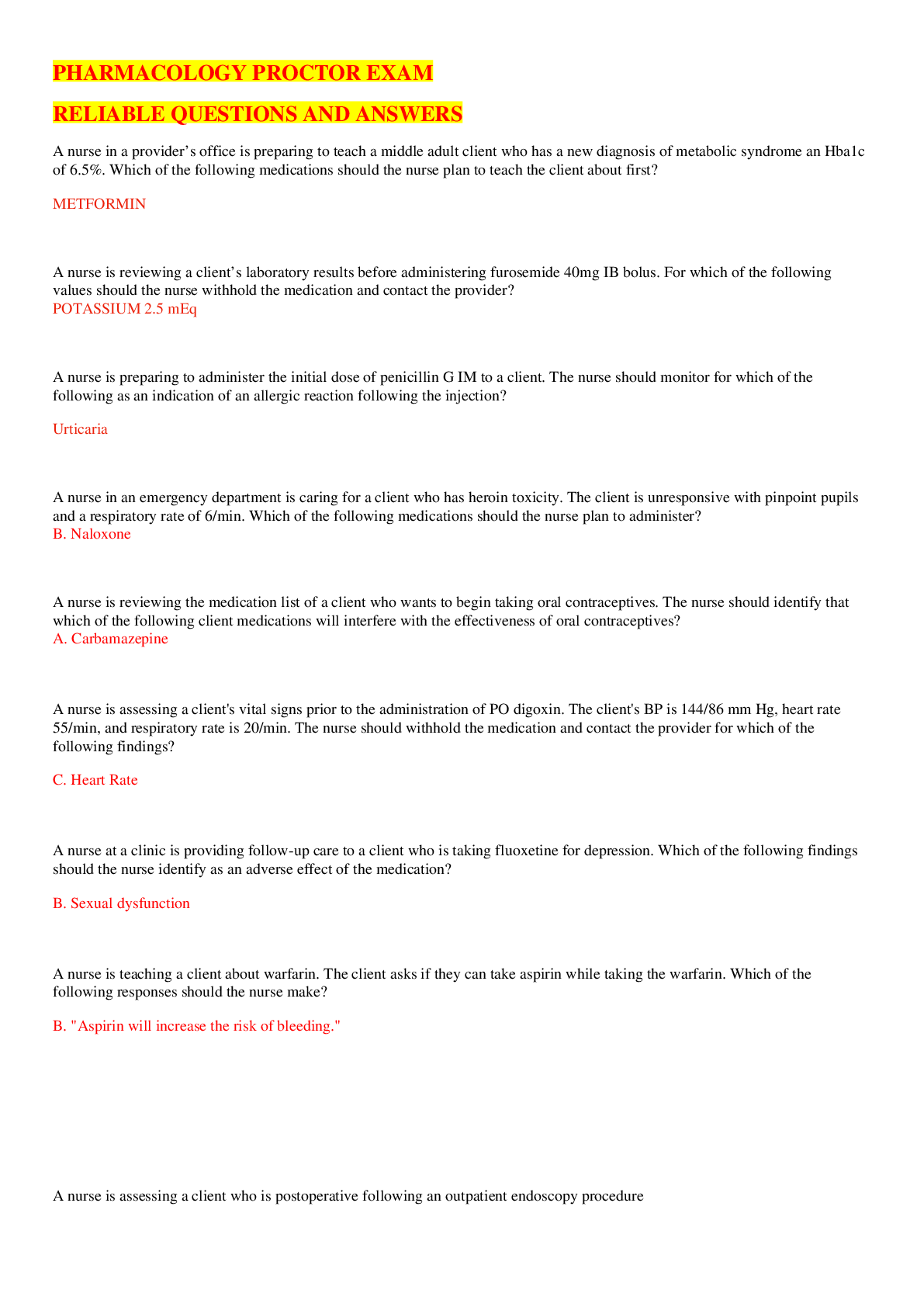
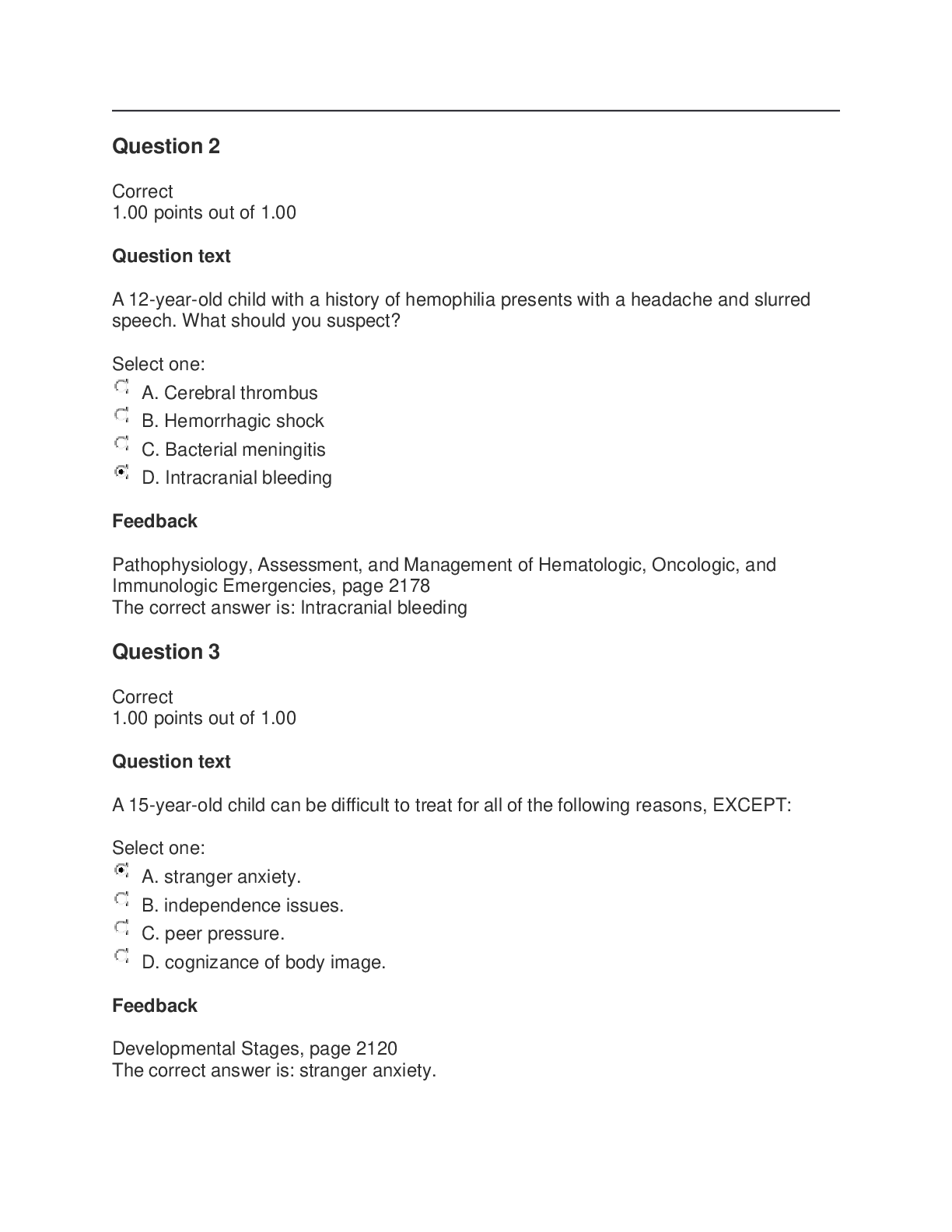
.png)

